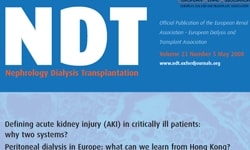 “Cannabidiol (CBD) is a natural compound of cannabis, which exerts complex and widespread immunomodulatory, antioxidant, anxiolytic, and antiepileptic properties. Many experimental data suggest that CBD could have several types of application in alcohol use disorder (AUD) and alcohol-related damage on the brain and the liver.
“Cannabidiol (CBD) is a natural compound of cannabis, which exerts complex and widespread immunomodulatory, antioxidant, anxiolytic, and antiepileptic properties. Many experimental data suggest that CBD could have several types of application in alcohol use disorder (AUD) and alcohol-related damage on the brain and the liver.
Experimental studies converge to find that CBD reduces the overall level of alcohol drinking in animal models of AUD by reducing ethanol intake, motivation for ethanol, relapse, and by decreasing anxiety and impulsivity. Moreover, CBD has been shown to reduce alcohol-related steatosis and fibrosis in the liver by reducing lipid accumulation, stimulating autophagy, modulating inflammation, reducing oxidative stress, and inducing death of activated hepatic stellate cells. Last, CBD has been found to reduce alcohol-related brain damage, preventing neuronal loss by its antioxidant and immunomodulatory properties.
CBD could directly reduce alcohol drinking in subjects with AUD. But other original applications warrant human trials in this population. By reducing alcohol-related processes of steatosis in the liver, and brain alcohol-related damage, CBD could improve both the hepatic and neurocognitive outcomes of subjects with AUD, regardless of the individual drinking trajectories. This might pave the way for testing new harm reduction approaches in AUD, i.e., for protecting the organs of subjects with an ongoing AUD.”
https://www.frontiersin.org/articles/10.3389/fphar.2019.00627/abstract









